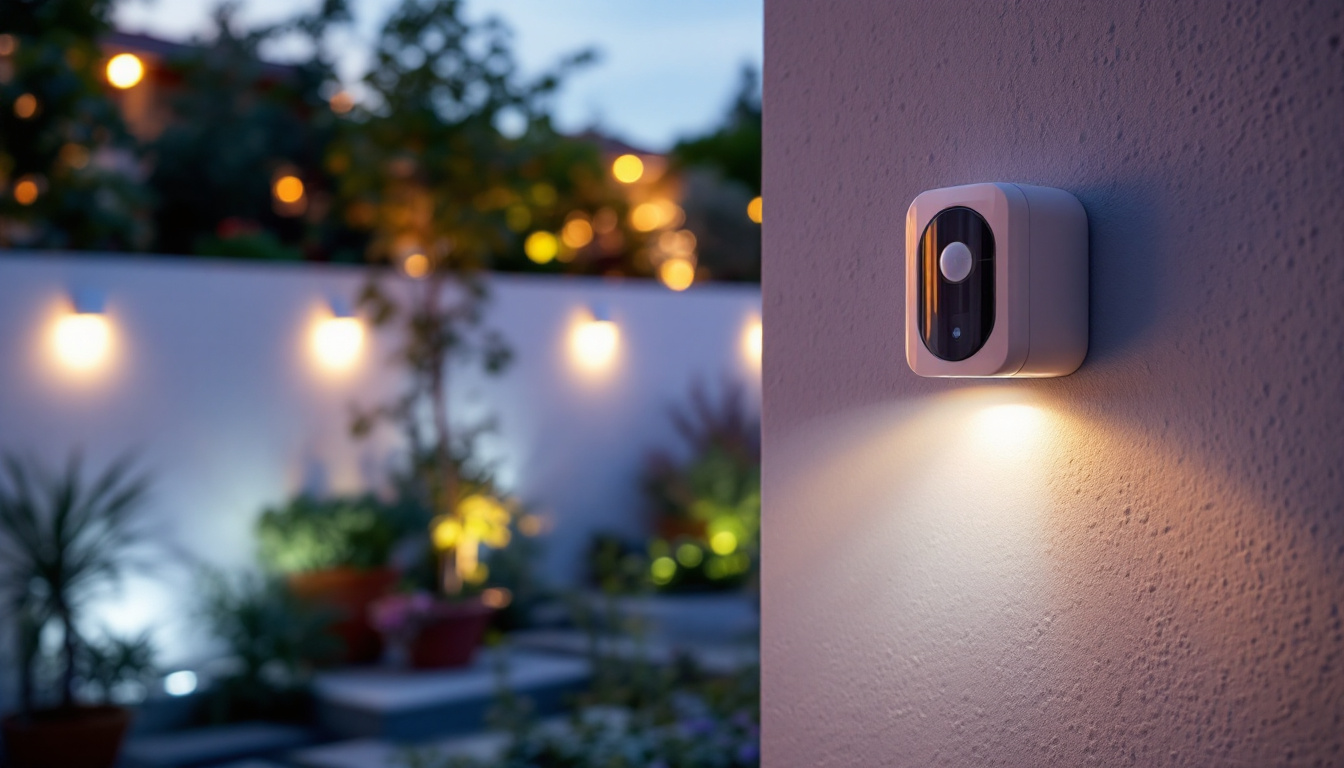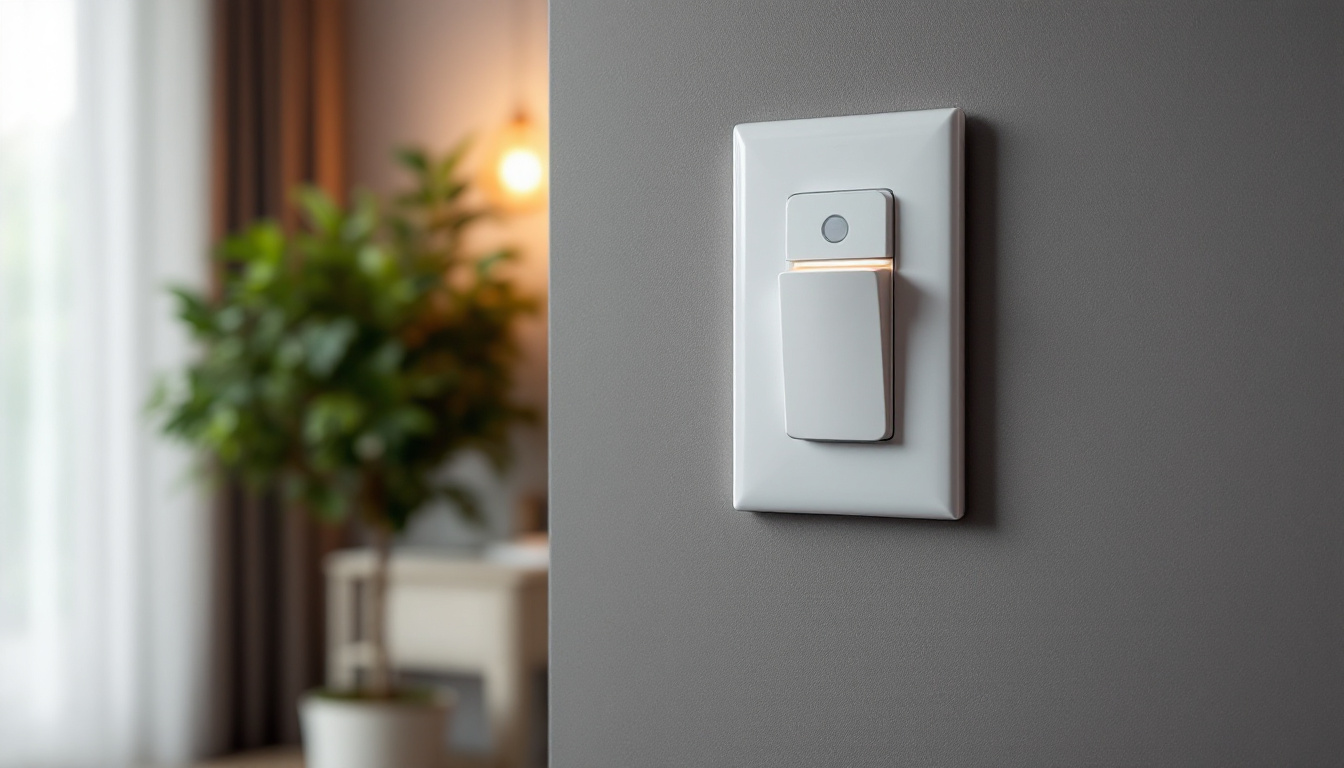
In the realm of outdoor lighting design, innovation is key to creating functional, aesthetically pleasing, and energy-efficient solutions. One of the most transformative technologies in this field is the outdoor motion detector sensor. These devices not only enhance security but also optimize energy usage, making them an essential component for lighting contractors aiming to deliver superior results. This article delves into the various advantages of motion detector sensors, their applications, and how they can elevate outdoor lighting designs.
Outdoor motion detector sensors are devices that detect movement in a specified area and trigger lighting systems accordingly. These sensors come in various types, including passive infrared (PIR), microwave, and dual-technology sensors. Each type has its unique features and applications, making them suitable for different environments and requirements.
Passive infrared sensors are the most common type used in outdoor lighting. They detect changes in infrared radiation, which is emitted by moving objects, particularly warm bodies like humans and animals. This technology is particularly effective for residential settings, where security and energy efficiency are paramount.
Microwave sensors, on the other hand, emit microwave signals and measure the reflection from moving objects. They can cover a larger area and are less affected by environmental factors such as temperature. This makes them ideal for commercial applications where extensive coverage is necessary.
Dual-technology sensors combine both PIR and microwave technologies, providing a more reliable detection system. By requiring both technologies to trigger the light, these sensors minimize false alarms caused by pets or other non-threatening movements.
Motion detectors work by continuously monitoring their designated area. When a person or object moves within the sensor’s range, the device activates the connected lighting system. This activation can be instantaneous or delayed, depending on the settings chosen by the user. Additionally, many modern sensors can be adjusted to control sensitivity and duration of the light, allowing for a customizable experience based on specific needs.
Most outdoor motion detectors are equipped with a range of features that enhance their functionality. For instance, some models include adjustable detection angles, allowing for more precise coverage. Others may offer integrated daylight sensors that prevent lights from activating during daylight hours, further conserving energy.
The advantages of incorporating motion detector sensors into outdoor lighting designs are manifold. From improved security to enhanced energy efficiency, these devices offer solutions that align with the modern demands of residential and commercial spaces.
One of the primary benefits of outdoor motion detector sensors is the increased security they provide. By illuminating areas when movement is detected, these sensors deter potential intruders and enhance safety for residents and visitors. Well-lit pathways, driveways, and entry points not only discourage criminal activity but also reduce the risk of accidents in poorly lit areas.
Moreover, the presence of motion-activated lighting can serve as a psychological deterrent. Criminals are less likely to target properties that are well-lit and monitored, knowing that their movements could easily be detected. This added layer of security is invaluable for homeowners and businesses alike.
Energy efficiency is another significant advantage of using outdoor motion detector sensors. Traditional lighting systems often remain on throughout the night, leading to unnecessary energy consumption. In contrast, motion sensors ensure that lights are only activated when needed, significantly reducing electricity usage.
By incorporating these sensors into lighting designs, contractors can offer clients a solution that not only saves money on energy bills but also aligns with sustainability goals. As energy costs continue to rise, the demand for efficient lighting solutions is more pressing than ever.
Outdoor motion detector sensors provide a level of convenience that traditional lighting systems cannot match. Homeowners and business operators no longer need to fumble for switches in the dark; lights automatically turn on as they approach, enhancing safety and ease of access.
Additionally, the flexibility of motion detectors allows for customizable lighting solutions. Contractors can design systems that cater to specific needs, such as adjusting the sensitivity of the sensor based on the environment or configuring different lighting patterns for various times of day. This adaptability makes motion detectors a versatile choice for a wide range of applications.
The applications of outdoor motion detector sensors are extensive, spanning residential, commercial, and industrial settings. Understanding these applications can help lighting contractors tailor their designs to meet the specific needs of their clients.
In residential settings, outdoor motion detector sensors are commonly used for security lighting around homes. They can be installed near entryways, garages, and backyards to illuminate these areas when movement is detected. This not only enhances security but also provides convenience for homeowners returning home after dark.
Additionally, motion sensors can be integrated into landscape lighting designs, highlighting pathways and garden features while conserving energy. This creates an inviting atmosphere while ensuring that lights are only active when needed.
For commercial properties, outdoor motion detectors play a crucial role in security and safety. Retail stores, parking lots, and office buildings benefit from motion-activated lighting that enhances visibility and deters crime. In these environments, the ability to cover large areas with minimal energy consumption is particularly valuable.
Moreover, motion detectors can be integrated into emergency lighting systems, ensuring that pathways and exits are illuminated during power outages or emergencies. This feature is essential for compliance with safety regulations and enhances the overall safety of the premises.
In industrial settings, outdoor motion detector sensors are vital for ensuring safety and efficiency. Warehouses, manufacturing plants, and distribution centers often have large outdoor areas that require effective lighting solutions. Motion sensors can be strategically placed to activate lighting only when personnel are present, reducing energy costs while maintaining safety standards.
Furthermore, these sensors can be integrated with other security systems, such as cameras and alarms, to create a comprehensive security solution. This integration enhances the overall effectiveness of security measures while providing real-time monitoring capabilities.
When designing outdoor lighting systems that incorporate motion detector sensors, several key considerations should be taken into account. These factors can significantly influence the effectiveness and efficiency of the lighting solution.
Proper placement of motion detectors is critical for maximizing their effectiveness. Sensors should be installed in locations that provide optimal coverage while minimizing obstructions. For instance, placing sensors at corners or elevated positions can increase their range and reduce the likelihood of false alarms caused by small animals or environmental factors.
Additionally, it is essential to consider the detection angle and range of the sensors. Different models offer varying coverage areas, and selecting the right one for the specific application is crucial. Lighting contractors should assess the layout of the property and the specific needs of the client to determine the best placement strategy.
Integrating motion detector sensors with existing lighting systems can enhance functionality and improve energy efficiency. Many modern sensors are designed to work seamlessly with LED lighting, allowing for easy upgrades and retrofitting of older systems.
Moreover, incorporating smart technology can further enhance the capabilities of motion detector sensors. Smart sensors can be programmed to work with mobile applications, allowing users to control their lighting remotely and receive notifications when motion is detected. This level of integration not only improves convenience but also aligns with the growing trend toward smart home technology.
Educating clients about the benefits and functionality of motion detector sensors is vital for ensuring satisfaction with the final product. Lighting contractors should take the time to explain how the sensors work, their advantages, and how to adjust settings for optimal performance.
Providing clients with clear instructions and demonstrating the system can help alleviate any concerns they may have about reliability or usability. This education fosters trust and encourages clients to fully embrace the benefits of motion detector technology in their outdoor lighting designs.
The field of outdoor motion detection technology is continuously evolving, with advancements that promise to enhance performance and expand applications. Staying informed about these trends is essential for lighting contractors looking to remain competitive in the industry.
As smart home technology becomes increasingly prevalent, the integration of motion detectors with smart systems is expected to grow. Future motion detectors may feature advanced connectivity options, allowing them to communicate with other smart devices in the home or business. This could lead to more sophisticated lighting control systems that adapt to user behavior and preferences.
Moreover, advancements in artificial intelligence could enable motion detectors to learn patterns of movement, reducing false alarms and improving responsiveness. This level of intelligence would enhance the overall user experience and increase the reliability of outdoor lighting systems.
Future developments may also focus on improving the sensitivity and range of motion detectors. Enhanced detection capabilities could allow sensors to recognize specific types of movement, distinguishing between humans, animals, and vehicles. This would further reduce false alarms and improve the overall effectiveness of outdoor lighting solutions.
Additionally, advancements in sensor technology may lead to devices that can cover larger areas with fewer units. This would simplify installation and reduce costs for contractors while providing clients with comprehensive coverage.
Another exciting trend is the development of energy harvesting technologies for motion detectors. These innovations could allow sensors to operate without the need for traditional power sources, relying instead on solar energy or kinetic energy generated by movement. Such technologies would enhance energy efficiency and sustainability, aligning with the growing demand for eco-friendly solutions in the lighting industry.
Outdoor motion detector sensors represent a significant advancement in lighting design, offering numerous benefits that enhance security, energy efficiency, and convenience. For lighting contractors, understanding the various types of sensors, their applications, and design considerations is essential for delivering exceptional solutions to clients.
As technology continues to evolve, staying informed about the latest trends and innovations will be crucial for contractors looking to remain competitive in the market. By embracing outdoor motion detector sensors, lighting professionals can create designs that not only meet the needs of their clients but also contribute to a safer and more energy-efficient future.
Ready to take your outdoor lighting designs to the next level with the latest in motion detector sensor technology? At LumenWholesale, we provide lighting contractors with the high-quality, spec-grade lighting products you need to outshine the competition. Enjoy unbeatable wholesale prices, free shipping on bulk orders, and the confidence that comes with choosing products that meet the highest industry standards. Elevate your lighting projects with the perfect blend of quality, affordability, and convenience. Discover the best value in wholesale lighting by visiting LumenWholesale today and make your next project a beacon of efficiency and design.

Discover how light switches with motion detectors are revolutionizing lighting design and installation.
Discover how LED retrofit kits are transforming the lighting industry and boosting profits for contractors.

Discover the often-overlooked types of light bases for small lamps that can transform your lighting projects.

Discover how strategic lighting choices in garages can lead to significant cost savings for lighting contractors.